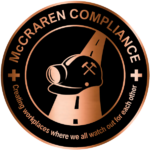First published by Safety+Health an NSC publication
Photo property of OSHA
The 5th U.S. Circuit Court of Appeals has put a temporary halt to OSHA’s emergency temporary standard on COVID-19 vaccination, testing and masking by granting an emergency motion Nov. 5.
The three judges granted the stay, pending an expedited review, because “the petitions give cause to believe there are grave statutory and constitutional issues with the [ETS].” They also gave OSHA and the Department of Labor until 5 p.m. on Nov. 8 to respond to a request for a permanent injunction from the petitioners, which include Louisiana, Mississippi, South Carolina, Texas, Utah, businesses, and religious and advocacy groups.
The suit is among a number of court challenges against the ETS, according to multiple sources.
On Oct. 29, the Supreme Court refused to block a vaccine mandate for health care workers in Maine. That same day, the 2nd U.S. Circuit Court of Appeals reversed a lower court’s decision to block a vaccine mandate for health care workers in New York.
Similarly, in August, Supreme Court Justice Amy Coney Barrett turned down an appeal from Indiana University students to block their school’s vaccination requirement.
OSHA published its ETS, which would apply to employers with at least 100 employees, in the Nov. 5 Federal Register. Covered employers would have until Dec. 5 to develop, implement and enforce a mandatory COVID-19 vaccination policy – or develop a policy that gives employees the choice to get vaccinated or undergo weekly COVID-19 testing.
Covered employees would have a deadline of Jan. 4 to be fully vaccinated or begin undergoing weekly COVID-19 testing. Under the ETS, unvaccinated workers would be required to wear a face covering while indoors or in a vehicle “with another person for work purposes.”
The ETS directs employers to provide paid time off to receive a vaccine – up to four hours for each dose – and paid leave for any side effects from vaccinations. The 30 days would allow employers time to determine the vaccination status of employees and get any documentation in order, among other considerations. It also would give workers time to get their only dose or the first of two doses of a vaccine.
According to an OSHA fact sheet, the ETS wouldn’t apply to employees who work from home, work “exclusively outdoors” or don’t report to a workplace “where other individuals are present.”
During a Nov. 4 press conference, OSHA Deputy Assistant Secretary Jim Frederick said many employers already are complying with the requirements of the ETS. He also noted that the agency chose the 100-employee threshold because employers with that many workers typically have the “administrative capacity” to implement the requirements of the ETS “promptly.”
He added: “We know that the vast majority of workplaces will comply with this rule.”
The ETS includes a 30-day comment period. One subject OSHA is seeking to learn more about is “the ability of employers with fewer than 100 employees to implement COVID-19 vaccination and/or testing programs.” This means the employee threshold could be adjusted in the future.
Frederick noted that the agency will provide “robust” compliance assistance along with outreach to companies.
In addition to the fact sheet on the ETS, OSHA has an ETS summary, a set of frequently asked questions and answers, and sample policies for employers.
In response to the ETS news, Sen. Mike Braun (R-IN) announced that he’s leading an effort – with the support of at least 40 other lawmakers – to overturn the regulation under the Congressional Review Act. However, the CRA requires approval from both the House and Senate as well as a presidential signature, so the attempt is largely symbolic.
“This unacceptable federal directive impacts tens of millions of Americans and warrants review by Congress,” Braun said in a press release.
OSHA estimates that two-thirds of private-sector workers, or around 84 million, would be covered under the ETS, which would preempt any state laws, according to Department of Labor Solicitor Seema Nanda. State Plans would have to adopt standards that are “at least as effective as” federal OSHA’s.
McCraren Compliance offers many opportunities in safety training to help circumvent accidents. Please take a moment to visit our calendar of classes to see what we can do to help your safety measures from training to consulting.



